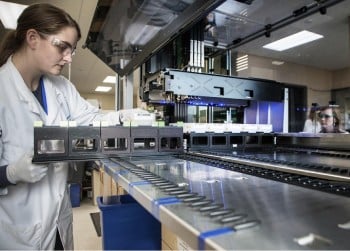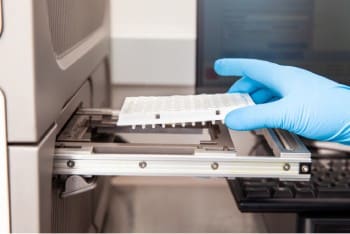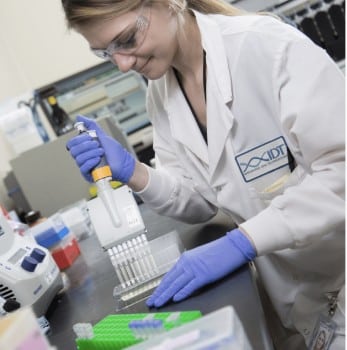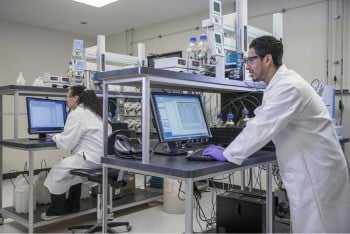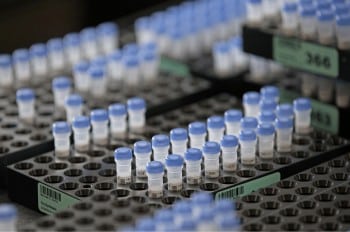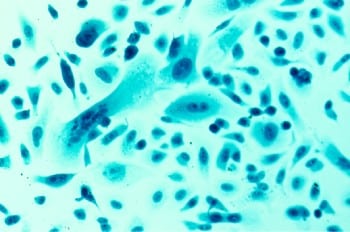Can this CRISPR-based therapy finally provide a cure for cancer?

The Takeaway: Cancer kills—it remains the second-leading cause of death both in the U.S. and worldwide. Traditional cancer treatments help—to a certain degree. But a revolutionary therapy based on CRISPR gene editing technology may be poised to make a major breakthrough in cancer care.
About 10 million people died in 2020 due to cancer—the equivalent of the entire population of Greece stolen annually by a disease in which some of the body’s cells grow uncontrollably and spread. In the U.S. the toll is over 600,000 deaths annually—that’s greater than the population of Baltimore—making cancer the second-leading cause of death among Americans. Despite decades of efforts, the incidence of cancer is only increasing for many of its most common forms, including breast, prostate, melanoma, and colorectal cancers.
Surgery, chemotherapy, and radiation therapy have each worked to slow or even stop cancer in some patients, but the disease marches on. When will we get a better weapon to fight cancer? There is one up-and-coming solution to know about: CAR‑T therapy.
Traditional methods of cancer therapy and their limitations
First of all, what’s wrong with the traditional methods of fighting cancer? These include surgery, chemotherapy, radiation therapy, and immunotherapy. While successful in some cases, each of these approaches has limitations:
- Surgery: Surgical removal of tumors is often effective for localized cancers that haven't spread. However, it may not be feasible if the cancer has metastasized or if the tumor is located in a critical or hard-to-reach area. Additionally, surgery may not be curative if cancer cells have already spread beyond the primary tumor site.
- Chemotherapy: Chemotherapy involves using drugs to kill cancer cells or stop their growth. While chemotherapy can be effective, it also affects healthy cells, leading to various side effects such as nausea, vomiting, hair loss, and increased risk of infection. Moreover, some cancers may develop resistance to chemotherapy drugs, reducing their effectiveness over time.
- Radiation therapy: Radiation therapy uses high-energy beams to kill cancer cells or shrink tumors. It can be a primary treatment or used in combination with surgery or chemotherapy. However, radiation therapy can damage nearby healthy tissues, leading to side effects such as fatigue, skin changes, and damage to organs in the treatment area. Additionally, it may not be suitable for certain types of cancers or tumors located in sensitive areas.
What is CAR-T cell therapy?
CAR-T cell therapy, short for chimeric antigen receptor T-cell therapy, is a form of cell therapy used to treat certain types of cancer. It involves modifying a patient's own T cells (a type of immune cell) in a laboratory to express a chimeric antigen receptor (CAR) on their surface. This CAR is designed to recognize specific proteins on cancer cells.
The process typically involves several steps:
- Collection of T cells: T cells are obtained from the patient's blood through a process called leukapheresis.
- Modification of T cells: In the laboratory, the T cells are genetically engineered to produce receptors on their surface that can recognize a specific protein (antigen) present on the cancer cells.
- Expansion of modified T cells: The modified T cells are grown in large numbers in the laboratory, creating a population of CAR-T cells.
- Infusion: The expanded CAR-T cells are infused back into the patient's bloodstream.
- Targeting cancer cells: Once in the body, the CAR-T cells recognize and bind to cancer cells expressing the specific antigen targeted by the CAR. This triggers the CAR-T cells to kill the cancer cells.
CAR-T cell therapy has shown remarkable success in treating certain types of blood cancers, such as acute lymphoblastic leukemia (ALL) and certain types of non-Hodgkin lymphoma. However, it can also cause severe side effects, including cytokine release syndrome (CRS) and neurologic toxicity, which need to be carefully managed by healthcare providers. Ongoing research aims to expand the use of CAR-T cell therapy to other types of cancer and to improve its effectiveness and safety.
When was CAR-T therapy discovered?
CAR-T therapy was first proposed as a technology in the late 1980s when scientists began experimenting with genetically modifying T cells to enhance their ability to recognize and destroy cancer cells. Initial research focused on engineering T cells to express artificial receptors that could target specific molecules on cancer cells. Throughout the 2000s, researchers made significant strides in understanding the mechanisms of T cell activation and the development of CAR constructs. In 2003, a study demonstrated the effectiveness of CAR-T cells in targeting and killing cancer cells in animal models. This provided a strong foundation for further clinical development.
The first clinical trials began in the early 2000s; they primarily focused on patients with advanced leukemia and lymphoma. These early trials showed promising results, with some patients achieving complete remission. However, there were also challenges, including toxic side effects and difficulties in manufacturing consistent and potent CAR‑T cell products. In 2017, the U.S. Food and Drug Administration (FDA) approved the first CAR‑T cell therapy for the treatment of certain types of leukemia and lymphoma in children and young adults. Following the initial success in leukemia and lymphoma, researchers and pharmaceutical companies began exploring the use of CAR‑T cell therapy in other types of cancer, including solid tumors. Clinical trials are ongoing to evaluate the safety and efficacy of CAR‑T cell therapy in various cancer types, with some promising results reported in recent years.
Applying CRISPR technology to CAR-T therapy: how it’s done
CRISPR (clustered regularly interspaced short palindromic repeats) technology has been applied to CAR‑T cell therapy primarily in two ways:
- Gene editing: CRISPR technology can be used to precisely edit the genome of T cells to enhance their effectiveness in targeting cancer cells. This involves modifying specific genes involved in T cell function, such as removing inhibitory receptors (e.g., PD-1) or introducing specific mutations to enhance T cell activation and persistence. By editing the T cell genome, researchers can potentially improve the potency and durability of CAR‑T cell therapy.
- Off-target effects: CRISPR technology can also be employed to minimize off-target effects and enhance the safety of CAR‑T cell therapy. Off-target effects refer to unintended genetic modifications that may occur at sites other than the intended target locus. By using CRISPR-based methods to screen and validate potential off-target sites, researchers can reduce the risk of unintended genetic alterations and improve the specificity of CAR‑T cell therapy. Lentiviral delivery of the CAR can cause insertional mutagenesis due to random integration. CRISPR can lead to off- target effects, but these are more straightforward to identify and design around.
CRISPR-based CAR-T therapy success stories
CRISPR-based CAR‑T cell therapy is a relatively new area of research. There have been significant advancements and promising preclinical studies and early-stage clinical trials demonstrating the potential of CRISPR technology to enhance CAR‑T cell therapy. These include:
- Enhanced targeting: CRISPR has been used to modify CAR‑T cells to recognize and target multiple tumor antigens simultaneously. By editing the T cell genome to express multiple CARs or modifying the specificity of existing CARs, researchers aim to improve the effectiveness of CAR‑T cell therapy against heterogeneous tumors and reduce the likelihood of tumor escape due to antigen loss.
- Improved persistence: One challenge with CAR‑T cell therapy is the short-term persistence of infused T cells in the body, which can limit the durability of therapeutic responses. CRISPR technology is being utilized to edit genes associated with T cell exhaustion or apoptosis, potentially prolonging the survival and activity of CAR‑T cells within the tumor microenvironment.
- Enhanced safety: CRISPR-mediated genome editing can be used to enhance the safety profile of CAR‑T cells by eliminating potential off-target effects or introducing genetic safeguards to prevent uncontrolled proliferation or adverse immune reactions. This includes strategies to mitigate the risk of cytokine release syndrome (CRS) and neurotoxicity, which are common side effects of CAR‑T cell therapy.
While these preclinical studies and early clinical trials show promise, it's important to understand that CRISPR-based CAR‑T cell therapy is still in the experimental stages—although the first CRISPR-based therapy has been approved and CAR‑T can benefit from that approval as well. More research is needed to evaluate its safety and efficacy in larger patient populations. Additionally, regulatory approval and commercialization of CRISPR-edited CAR‑T cell therapies will require rigorous testing and validation to ensure their safety and effectiveness in clinical settings.

